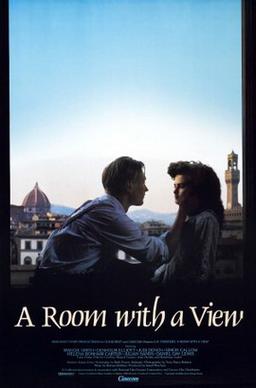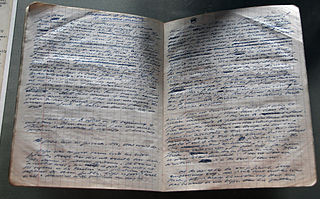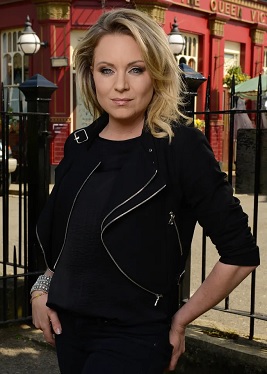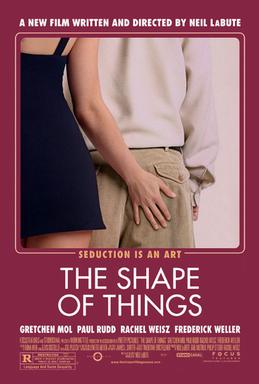Overview
Act 1
We are introduced to Amy, Dominic, Evelyn, and Esme (all the characters except Frank and Toby). Esme and Dominic immediately dislike one another because of their differing views: Dominic supports new media and aspires to become a filmmaker, while Esme defends the importance of the theater. We learn that Amy is pregnant, and Esme reveals this to Dominic – despite Amy's wishes that she says nothing of it.
Act 2
We are introduced to Frank, Esme's neighbour and financial consultant, and their relationship is hinted at. Amy and Dominic are still together, with children, but Esme continues to disapprove. There is also a continuation of Esme and Dominic's argument over popular culture and theater. The argument turns into one over Dominic's right to be with Amy and there is such frustration that the couple end up leaving Esme's home abruptly.
Act 3
Amy comes back to visit her mother, and we learn that Dominic has left Amy for a young actress. Esme has also lost all her savings in an investment scandal, and continues to refuse Frank's love interest. Amy and Esme again quarrel over her choice to be with Dominic, discussing her view that love should be given unconditionally. She does not want to admit that her mother was partially right, but is still frustrated that Esme cannot see why she loved Dominic.
Act 4
Amy and Dominic have separated and Amy has died. Dominic, now a film director, goes to Esme (who is once again a successful actress) seeking peace between them in order to honor what Amy was constantly trying to achieve.
Synopsis
Amy's View is a four-act play set over the course of sixteen years.
Act One begins in 1979, in the living-room of Amy's mother's home, which is decorated with paintings done by her late father, an obscure artist. Amy and her then-boyfriend, Dominic, are waiting for Amy's mother, Esme, to return from her theater performance in London. Esme's mother-in-law, Evelyn, is keeping them company while they wait. We quickly learn of a small publication Amy sold when she was a young girl called Amy's View, as well as Dominic's intense interest in cinema. Dominic has started a publication as well, called Noir et Blanc in which he reviews films, and which he hopes will lead him to a career in filmmaking. Amy realizes Noir et Blanc is quite like Amy's View, "except this time the view is Dominic's." [11]
When Esme does finally return, she is instantly concerned about Amy's wellbeing, a foreshadowing of the reason Amy has come to visit. Esme and Dominic are introduced for the first time, and each has a tentatively awkward and distant demeanor towards the other. Dominic explains more about his magazine: "we ring people up and we’re terribly nice to them. Then we write something horrid which appears the next day." He and Esme somehow share a good laugh over this, but it worries Amy nonetheless. He continues, adding that "these are well-known people. You think perhaps by now they’d be more secure. But not at all… It almost shocks me how much," which clearly irritates Esme, a prominent West End actress. [12] Amy tries to ease the tension by inquiring about her mother's current play, but this quickly bores Dominic who is much more interested in discussing television or movies. He goes off in a huff to get some work done, leaving Amy and her mother to have a more private conversation.
After a short while of discussing Amy's career and relationship with Dominic, Esme suddenly announces that she knows Amy is expecting a child. This is clearly the reason for Amy's visit, to get her mother's advice on the situation, since she feels as though she cannot reveal the situation to Dominic. Esme spends time attempting to figure out just why this is, and why Amy would want to be with this sort of man. In the end, Dominic comes back down to ask a quick question, but Esme, unexpectedly and under Amy's protest, informs Dominic of Amy's pregnancy.
Act Two takes place six years later, in 1985, in the same living-room. Amy and Dominic, as well as their unseen children, and Esme and her new interest Frank, are returning from a ribbon cutting ceremony for a local fête. Everyone seems to be in high spirits, enjoying the summer weather, and it is briefly noted that Frank has begun looking after Esme's finances. The airy chitchat soon turns to conversation of Dominic's plan to interview Esme for his new television program – although she makes blatant attempts to escape his questions. He is putting together a piece about how he thinks the theater is dead and new generations can’t connect with the slow pace, the everyday bore of it all. Esme, although cheerful in manner and tone, resents Dominic, pressing that "it's always the death of the theater. The death of the novel. The death of poetry. The death of whatever they fancy this week […] It's off to the scaffold with everyone except the journalists!" [13]
It soon comes out that Dominic has hardly – if ever – even been to any plays, despite his ego as a critic. (Throughout this exchange, we see Evelyn once again, but she appears to have Alzheimer's, as she continues to interject, asking where Bernard has gone, and does not recognize Esme.) As the conversation escalates, it is revealed that what they really seem to be getting at is whether Dominic deserves to be with Amy or not. Dominic, feeling insulted and extremely frustrated, starts to get the children together to leave while Amy and her mother argue over Esme's refusal to give Dominic a chance. With the disagreement still unresolved, Amy and Dominic leave Esme alone to think over what's been said.
Act Three begins once again in the living-room, eight years later in 1993. Amy arrives at the house looking for Esme to find Frank poring over various books and documents, Evelyn sleeping across the room in a wheelchair. Esme arrives not long after Amy, but is surprised to see her. It seems clear that they have not spoken for quite some time, and Esme is so glad to finally see her daughter again that she begins to weep as she hugs Amy. Once she has recovered, we learn that Esme has been acting as a nurse on a television show, and that Frank had been trying to marry Esme practically since the last time Amy had visited. Esme knows why Amy has come though, as her marital scandals have been all over the news since Dominic is now a "media monolith." [14] It seems after all that Dominic had a weak point, and has just proved Esme right by leaving Amy for an attractive young Swedish actress. Dominic and Amy had married even, and yet he still could not commit completely. It was just the worry that Amy and her mother had discussed that night fourteen years ago.
The focus then shifts and we learn that Amy's mother has run into a bit of a rough patch with her investments – about five hundred thousand dollars worth. Amy is shocked and outraged of course, especially when she discovers that Esme's funds had been entrusted to Frank at Lloyd's of London. Amy wants Esme to petition, perhaps sue Frank, so that she may not have to pay all of the money back. Esme refuses, saying she knew what she was getting herself into and that she would have to face the consequences. This quarrel soon turns into another argument about Amy's relationship with Dominic. Amy wants her mother to know that there truly was a good, loving side to her husband, but that she hates to admit that she was wrong about some things and that Esme was right. There are intense emotions circulating throughout the two women as they grapple with their situations, and there is a heartfelt, although awkward, struggle as Esme tries to console Amy. In the fervor of the moment, before leaving, Amy says to her mother, "I went with Dominic because he was the future. I’m frightened of you because you’re the past." [15]
Act Four is set in 1995, and is set backstage, in a dressing-room of a small West End theater. A young actor, Toby, comes in, speaking with Esme about the play as she begins to ready for the next show. When he leaves to get Esme a cappuccino, Dominic wanders into the dressing-room. He has brought with him a box, tied with string, which he presents to Esme as a gift. He also reveals that he attended the matinee showing and enjoyed it very much. It is obvious that he has something else on his mind, however, and he soon inquires what has become of all the cheques he has sent her, wondering if she was insulted by it. She explains that every income she receives goes to paying off her debt, so it would be of no use to cash them.
We slowly discover that Dominic has moved on to a new marriage and recently directed a hit film. They argue over Esme's relationship with Frank, her finances, the unnecessary violence of Dominic's new movie, and Dominic's new marriage. Then we learn that Amy has died due to a hemorrhage. Esme looks for some sort of emotion in Dominic, although he openly admits that, of course, he betrayed her. But he is clear in his reason for coming to see Esme. He knows that Amy "would have wanted that [they] should be friends." [16] He doesn’t want Esme to waste the rest of her life hating him. He leaves, allowing her time to open her gift: bundles and bundles of five-pound notes.















